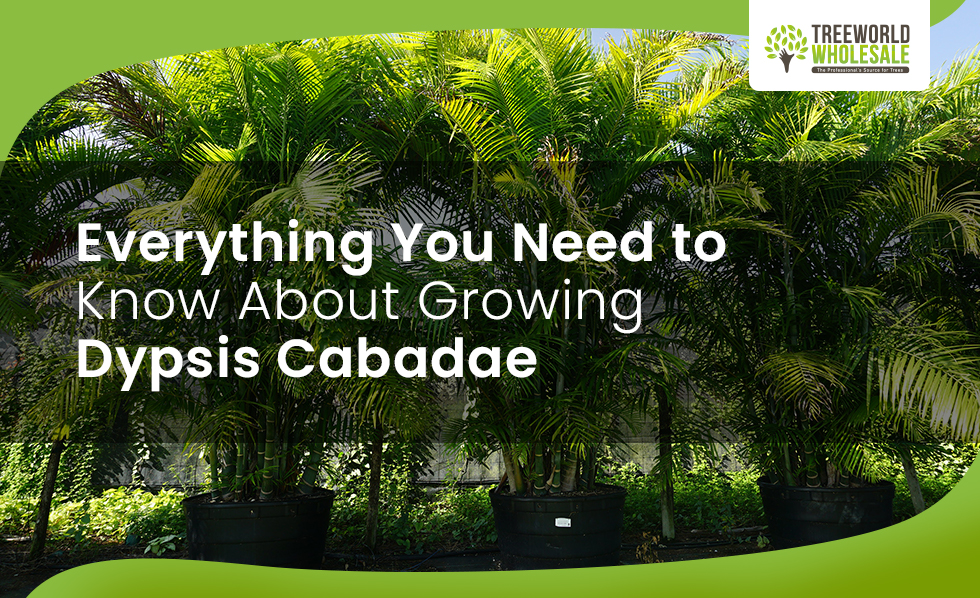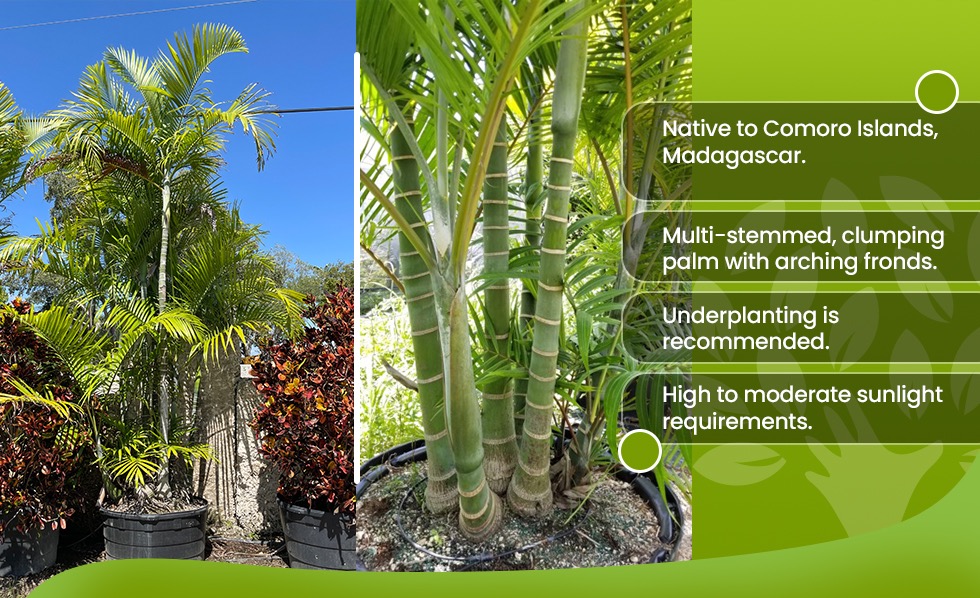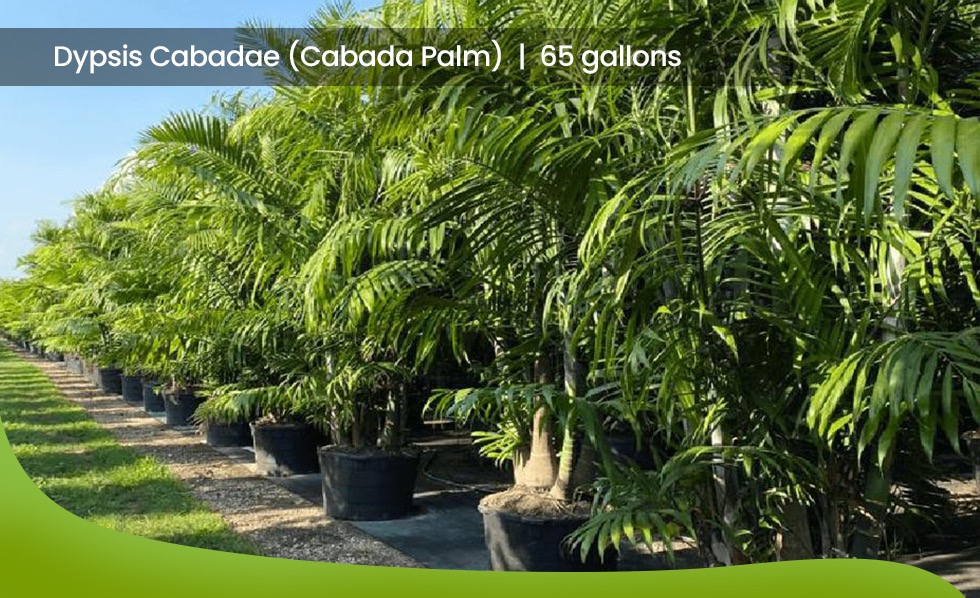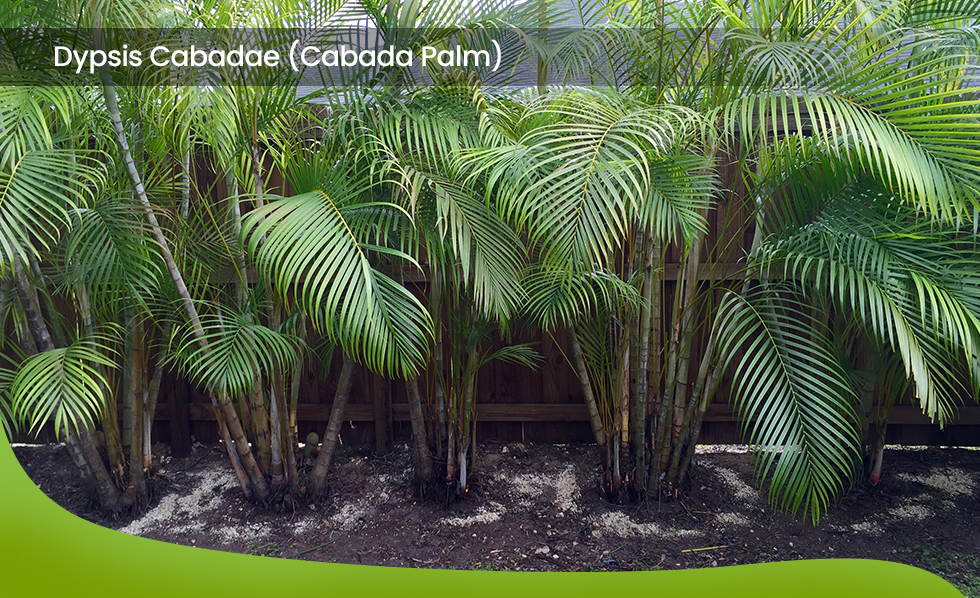Do you want to add a tropical touch to your backyard? Or are you looking for a perfect plant to add to the curb appeal of your home? Either way, planting Dypsis Cabadae, also known as Cabada Palm, in your yard can instantly teleport you to a tropical paradise. If you are an intermediate gardener, these species should be your go-to choice as they are relatively easy to maintain; but can be somewhat sensitive to transplanting and weather conditions. However, to ensure they remain strong and health it is important to provide regular maintenance. To ensure they remain strong and healthy.
Here’s a guide to help you with the maintenance of Cabada Palm and creating a lush beachy feel in your backyard.
What is Dypsis Cabadae? Features of Cabada Palm
The cabada palm is a multi-stemmed, clumping palm with arching fronds. You’d be surprised to know that this variety of palm was known to be cultivated in Cuba before being discovered a few years ago in the wild in the Comoro Islands, Madagascar. While Dypsis Cabadae resembles the more commonly grown Areca palm (Dypsis lutescens). The latter does not clump as aggressively as the former. This means it entails fewer problems when it comes to pushing it on the fences and retaining walls. On the flip side, this means they usually don’t have much foliage at the bottom half, so underplanting is recommended.
Additionally, when compared to areca palms, cabadas grow taller by 10 feet, develop a bit slower, and the fronds are held more stiffly to the stem.
What Are Dypsis Cabadae Sunlight and Soil Requirements?
Finding the appropriate site in your backyard for palm trees is crucial to ensure that they get enough sunlight. Some palms thrive in the shade. So if you plant cabada palms in direct sunlight, they are likely to turn brown, wither and die. Similarly, if you plant a palm that enjoys sunlight in a shaded area, it will struggle to develop roots and will turn out thin with scanty foliage. As for cabadas (Dypsis Cabadae), they have high to moderate sunlight requirements, similar to that of an areca palm.
Most palm trees require soil that drains well. So, Cabada palm is also adaptable to a range of well-drained soil conditions as a wet root system can result in the onset of the rotten root. As for adding fertilizers to the soil, palms can thrive without it; but you can dramatically increase the growth of your trees if you feed them a few times a year.
Cabada Palm Care In Garden
Palms make excellent trees along the border of the property. If you live in an area around Florida, palms are an excellent choice for your garden. However, since these areas are also a hurricane risk and palms don’t have a deep root system, you should avoid planting any large palm tree species near your home, as storm winds may knock them over and damage your property. This is why dypsis cabadae makes for one of the best varieties of palm trees in Florida.
If you are looking for plants to spruce up your backyard, get in touch with Tree World Wholesale to get a quote. We grow them in 45, 65, 100 and 200 gallons containers.








